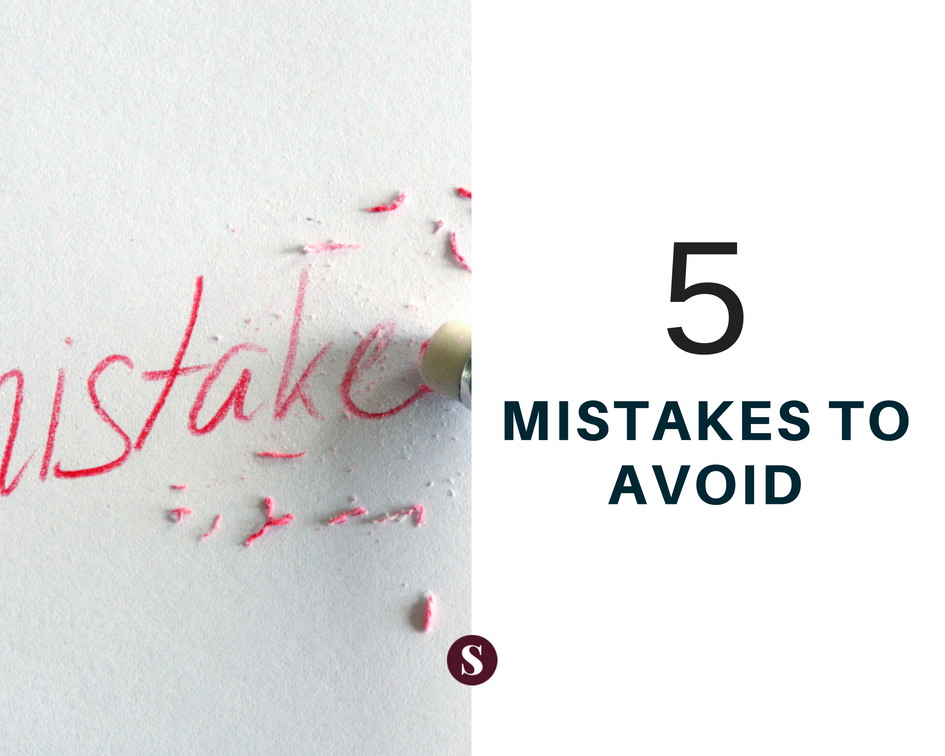
09 Apr 5 Common Influencer Marketing Mistakes To Avoid
Influencer marketing is booming these days and most marketers have either already tried it or are gearing up to do so soon. While the world is getting used to this marketing strategy, it can be difficult for marketers to anticipate exactly what will work well and what won’t. While a little trial and error is essential, there are a few common mistakes you’d be better off avoiding entirely. We’re going over 5 common mistakes we’ve seen so that you don’t have to correct them later!
# 1: Focusing Too Much On Size And Not Enough On Engagement
When choosing influencers you want to work with, it’s easy to think the best choice is the person with the most reach. But the number of followers isn’t everything, especially when follower counts can be artificially boosted. What works better than one person with tons of followers is several people with a combined audience of the same size.
Why? Well, there are a few reasons. Influencers with fewer followers tend to see higher engagement rates on their posts and offer more follower loyalty. Consumers tend to trust influencers who feel accessible and #relatable (go figure). While the Kardashian-level celebrities have tons of followers, some of whom are fiercely loyal, micro-influencers corner the market on authenticity, and can be even more influential to their followers as a result. That means a higher ROI for the brands micro-influencers feature, especially when brands form a long-term relationship with these influencers. More on that later.
#2: Going In Without A Strategy
Since influencer marketing is having a heyday right now, it can be tempting to jump in prematurely and just hope for the best. However, as with any marketing tactic, it’s important to start with clear goals, organization, and a concrete plan.
Be sure to identify why you want to try influencer marketing. What are your goals with this campaign? How will you measure the success of this campaign? Is there anything this marketing tactic might offer that your other marketing efforts aren’t achieving?
You also need to know what audience you want to reach and what influencers might help you reach that audience. Relatedly, have a plan for how you’ll select the best influencers for your campaign. If you need help finding influencers, check out our article on How To Find Influencers To Promote Your Brand.
And of course you need to have a plan for how and when to compensate influencers for their work. Few things are more off-putting for influencers than an unclear or disorganized payment plan.
#3: Controlling An Influencer Too Much (Or Too Little)
 We get it: everyone likes having control. You know what message you want to send to consumers, and maybe you have strong feelings about how that message gets communicated. Undoubtedly you want to make sure that your investment yields the highest possible return. It can be all too easy to let these facts get in the way of your influencers’ creativity. In other words, it can be easy to try to control influencers too much.
We get it: everyone likes having control. You know what message you want to send to consumers, and maybe you have strong feelings about how that message gets communicated. Undoubtedly you want to make sure that your investment yields the highest possible return. It can be all too easy to let these facts get in the way of your influencers’ creativity. In other words, it can be easy to try to control influencers too much.
But remember why you’re turning to influencers in the first place. They’ve created a branding all their own and cultivated a relationship with their followers. This branding and relationship must remain intact for an influencer’s audience to feel that the messaging they see about your brand is authentic and relevant to their interests. Consumers are quick to spot messaging that feels forced or scripted, and are more likely to ignore that messaging. They may even come to distrust that influencer and the brand they featured.
On the flipside, giving an influencer little to no input can hurt your campaign too. They may feature your product in a way that is counter to your branding goals, or they may have no effect one way or the other.
So make sure your influencers know what you want, but don’t overly limit their creativity. Give them clear guidelines for what you want to communicate about your product or brand, a creative brief to help guide the look of the content you’re envisioning for your campaign if need be, and feel free to ask that they use a particular hashtag or provide coupon code to their audience. Don’t, however, micro-manage what they’re creating for you diminish their voice in the editing process. Not only is this typically less effective for the current campaign because it completely negates the purpose of mobilizing influencers to create unique content, but it also frustrates the influencers and turns off people who could otherwise have been powerful brand allies in the future.
#4: Trying to Hide Your Relationship With an Influencer
Many brands get anxious about disclosure when it comes to influencer marketing. Many brands embark on influencer marketing campaigns knowing that the consumer’s impression of an influencer’s authenticity is part of what makes this marketing strategy so powerful. However, that may lead some to attempt to hide their relationship with their influencers, hoping to make consumers think that the influencer mentioned their product all on their own, just because they like it that much. It’s not that difficult to see why some brands fall into this trap: They don’t want to appear as though they are buying support, and they certainly don’t want consumers to believe an influencer’s positive review is not trustworthy.
But failing to disclose your relationship with an influencer comes with its own set of problems. First and foremost, the Federal Trade Commission requires that an endorser disclose any “material connection” between themselves and an advertiser. A material connection can include simply receiving the gift of a free product or having a personal or business relationship with the brand. If you don’t want an FTC crackdown on your hands, you must disclose.
But disclosure is not the enemy some brands may assume it is. For one thing, savvy consumers can spot these “material connections” a mile away, whether they are disclosed or not. Consumers vastly prefer a brand that they see as transparent and honest over one that appears to be trying to trick them into buying into (or actually buying) something.
#5: Not Thinking Long Term

Influencer Marketing is most effective when your efforts are continued over time. This gives as many consumers as possible the opportunity to see your brand/product (sometimes over and over again). To get the best results, you need a vision for how to extend your IM strategy into the future, rather than thinking of your next campaign as a one-and-done project.
It may seem obvious, but the more a consumer sees your brand or product being mentioned, the more likely they are to make that purchase decision, follow your social media account, or spread the word about your brand to their own peers. Really getting through the average consumer’s mental spam filter might require encountering your brand more than once, or from more than one source. The more you keep your brand visible over time, the more people will take note. This means you shouldn’t expect a single one-off campaign to deliver the big, lasting results you might be after.
So you need an extended influencer marketing plan, which in turn requires you to cultivate lasting relationships with influencers. An influencer willing to work with you over and over again is likely to convert more of their followers and create better, more authentic content featuring your brand.
If you can avoid these 5 mistakes, you’ll be putting your best foot forward with your next influencer marketing campaign and setting your brand up for success. For more help avoiding the pitfalls of these and other common mistakes, you can always reach out to us by email! We’d love to help you make your next campaign excellent.



No Comments